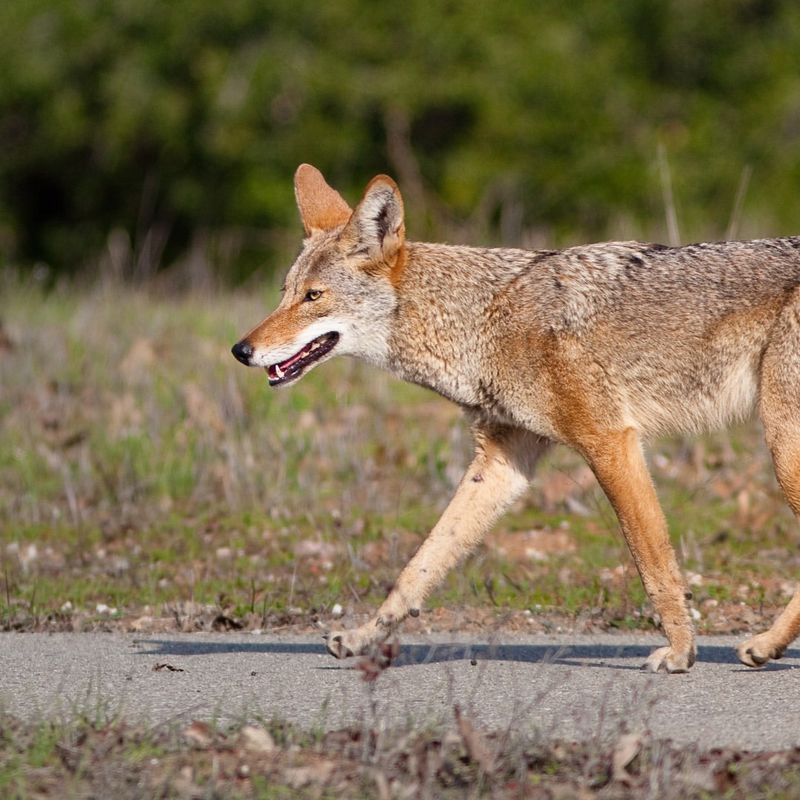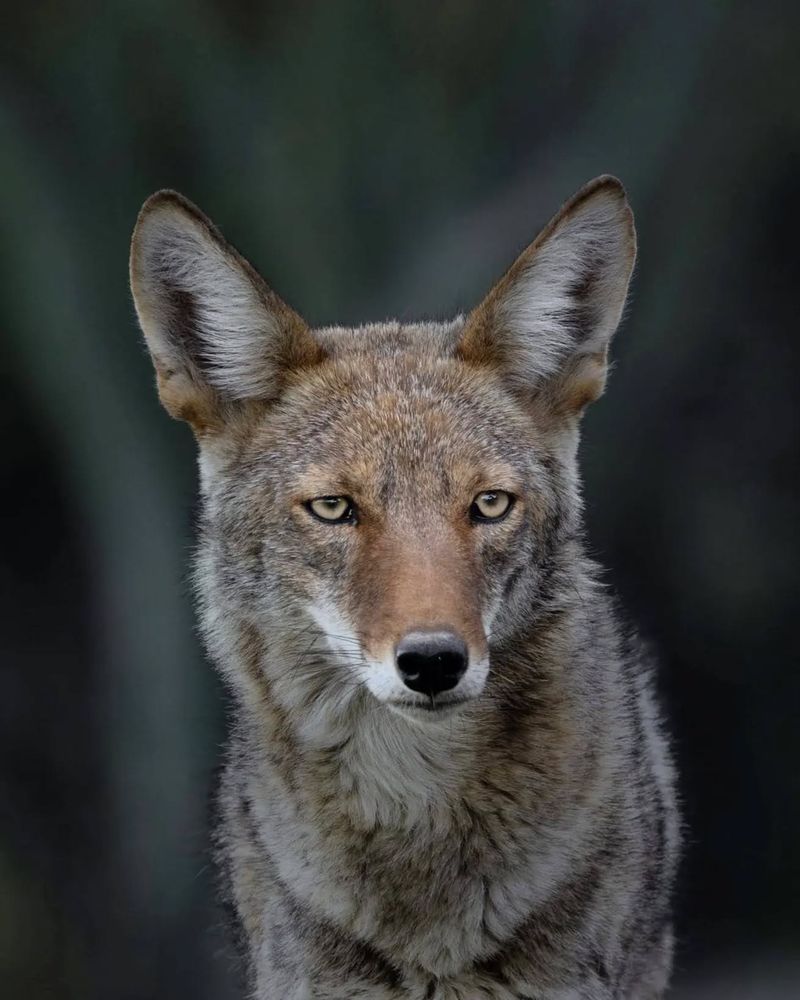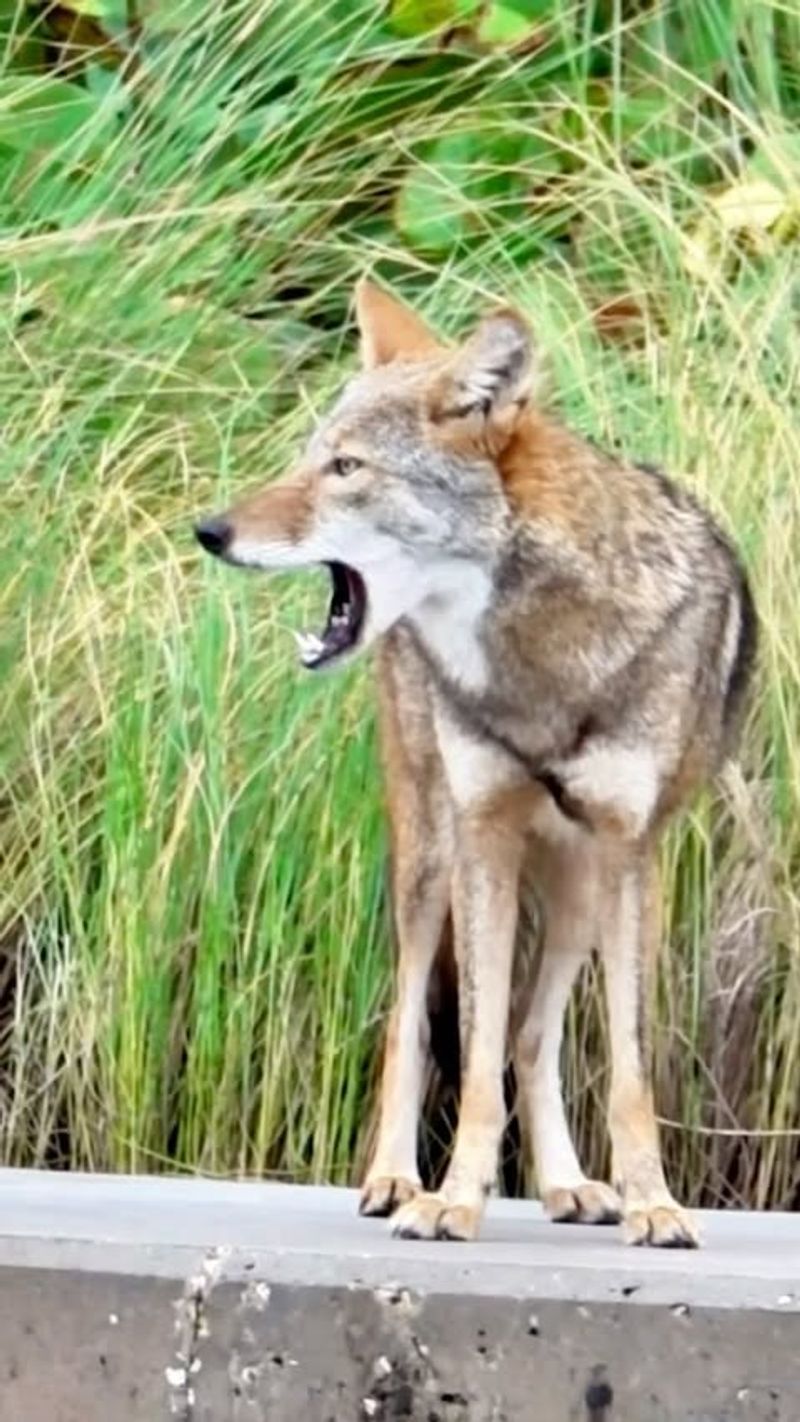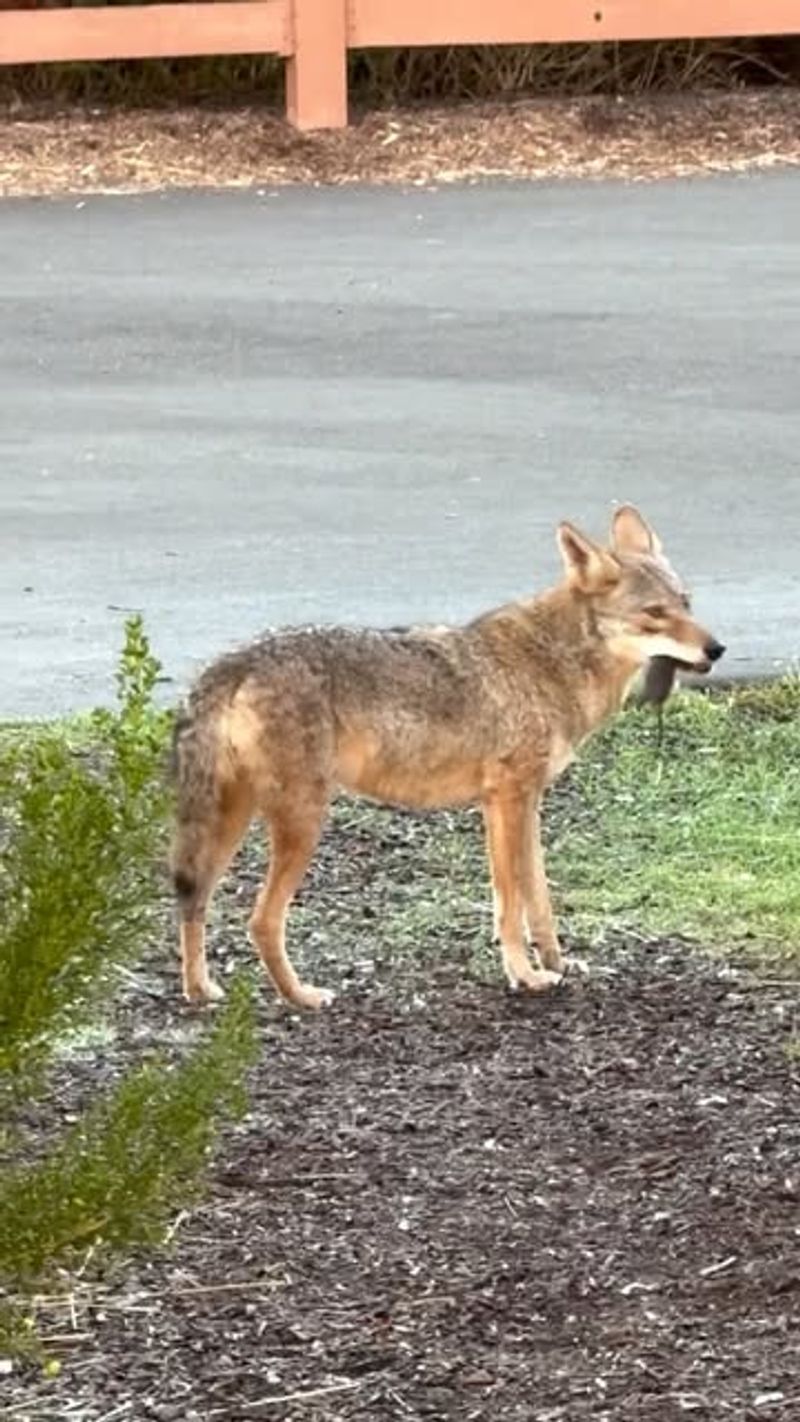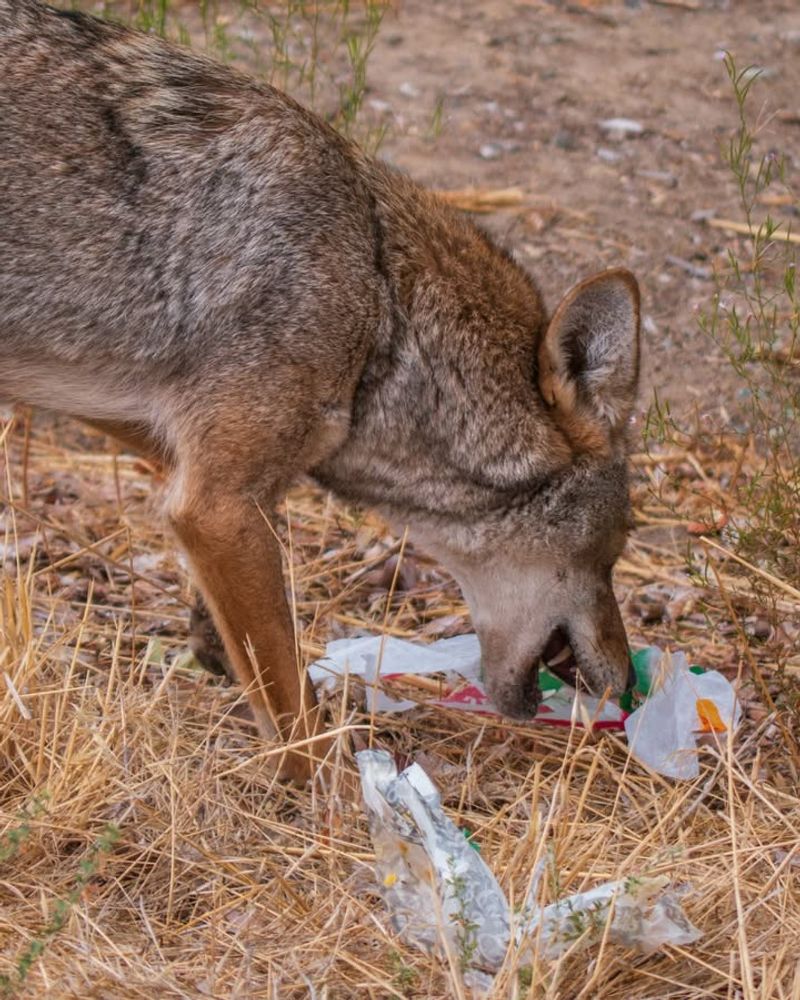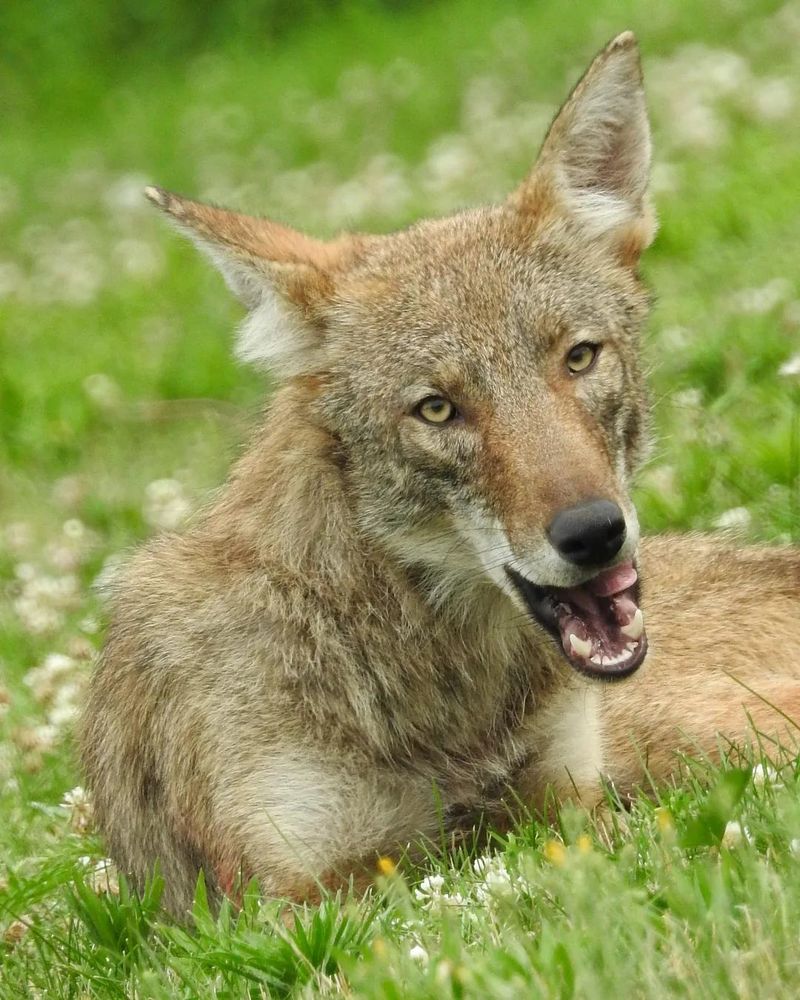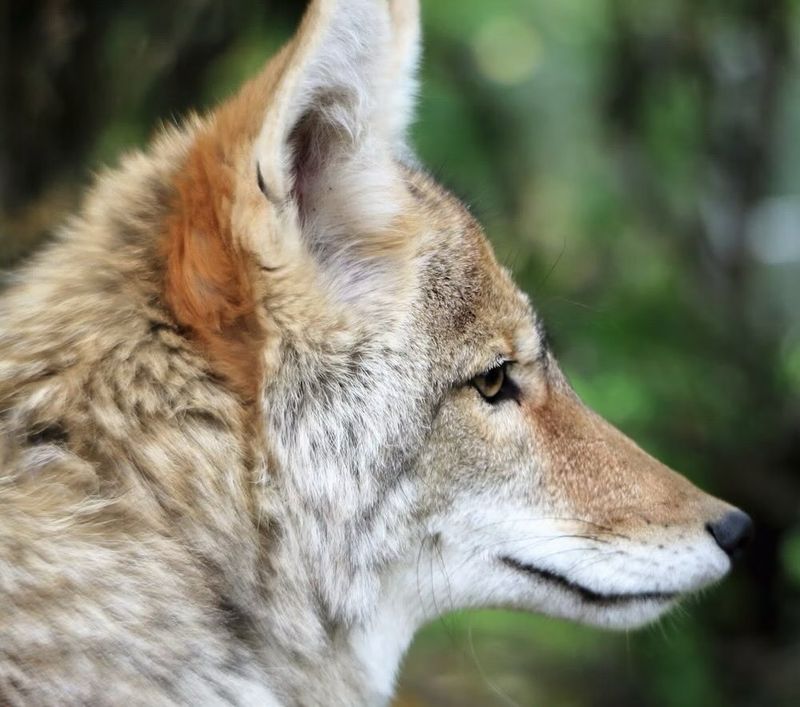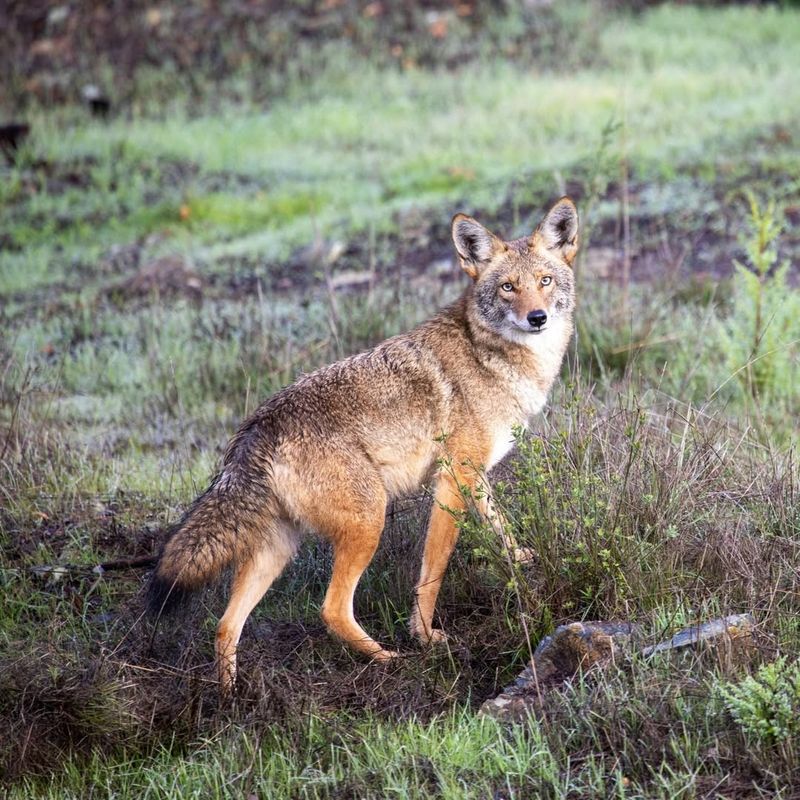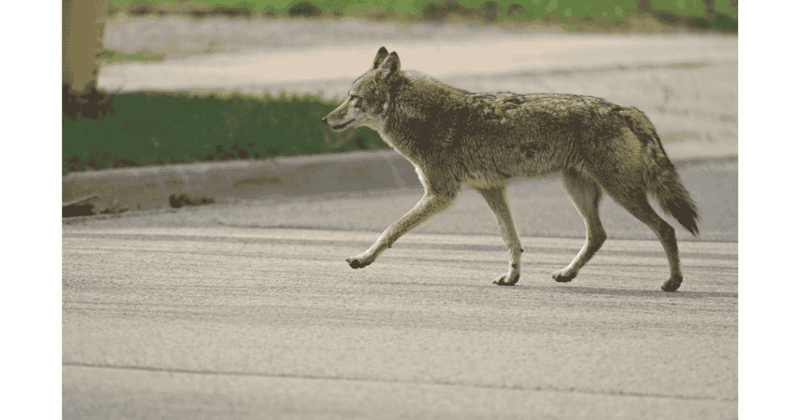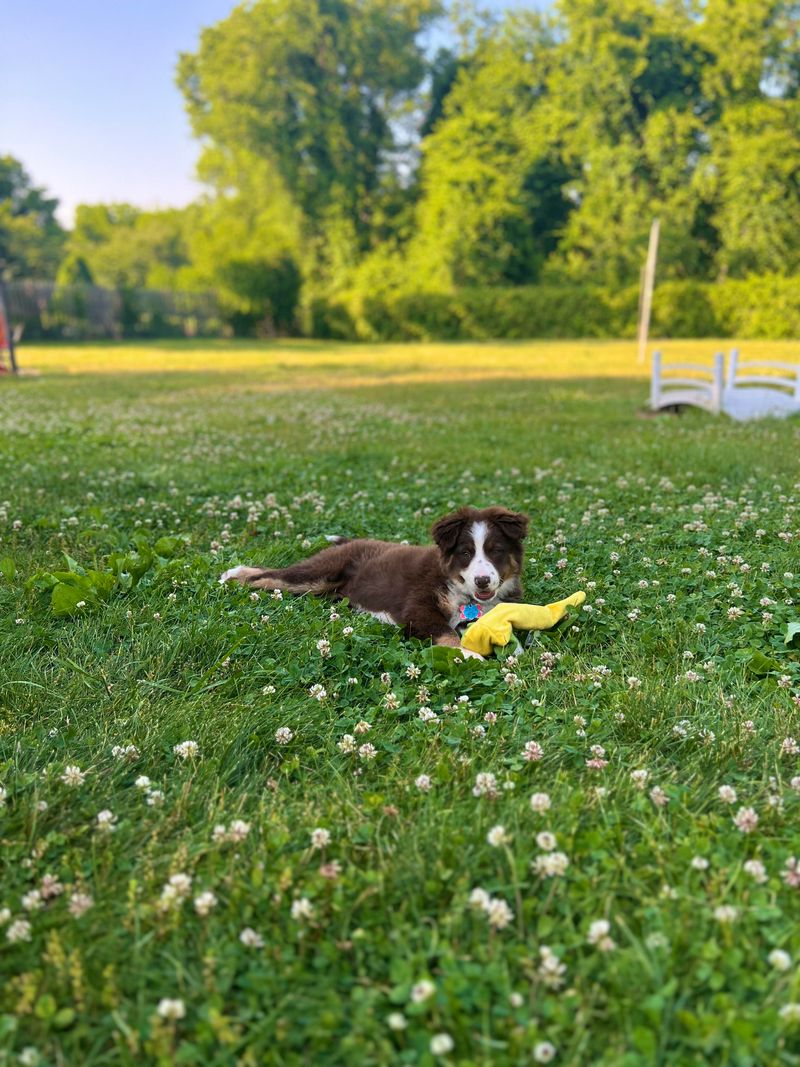Seeing a coyote in your Nebraska backyard can be a bit unsettling, especially if you’re not expecting it. These wild animals are showing up more often as they search for food and shelter.
As they adapt to suburban life, it’s important to know how to respond calmly and safely. A smart reaction protects your family, your pets—and the coyote too. I’ve found that simple steps like securing trash and avoiding direct contact go a long way.
Understanding what to do (and what not to do) makes all the difference. Want help creating a quick safety checklist for coyote encounters in your area?
1. Make Yourself Look Big And Intimidating
Stand tall and raise your arms above your head to appear larger than you actually are. Coyotes naturally fear humans, so showing dominance often convinces them to leave quickly.
Wave your jacket or a blanket to create more visual presence. Making yourself seem threatening without actual aggression works wonders in most encounters with these cautious creatures.
Never crouch down or turn your back, as this signals weakness and could encourage the animal to approach closer instead of retreating.
2. Use Loud Noises To Scare It Away
Yelling, clapping your hands, or banging pots together creates enough noise to frighten most coyotes into running off. Sound carries well outdoors, especially during quiet morning or evening hours when these animals are most active.
Keep a whistle or air horn near your back door for quick access during unexpected wildlife visits. Consistent loud sounds tell the coyote that your yard is not a safe or welcoming place.
Repeat the noise-making until the animal completely leaves your property and disappears from view.
3. Bring Your Pets Inside Immediately
Small dogs and cats look like prey to hungry coyotes, making them vulnerable during outdoor playtime. Grab your pets quickly but calmly to avoid creating panic or attracting more attention from the wild visitor.
Keep animals indoors until you confirm the coyote has left the area completely. Installing motion-sensor lights can help you monitor your yard before letting pets back outside.
Always supervise small animals during bathroom breaks, especially at dawn and dusk when coyote activity peaks throughout Nebraska neighborhoods.
4. Spray Water From A Hose Or Sprinkler
Water provides a safe, non-harmful way to encourage a coyote to move along without causing injury. Most wild animals dislike getting wet and will quickly retreat when sprayed directly.
Aim the stream toward the animal while maintaining a safe distance from your position. Motion-activated sprinklers offer automatic protection when you are not home to respond personally.
Repeated water encounters teach coyotes to avoid your property in the future, creating a long-term deterrent that protects your space naturally and humanely.
5. Never Leave Food Or Garbage Accessible
Coyotes possess incredible noses that detect food from impressive distances, drawing them straight to easy meals. Secure trash cans with tight-fitting lids and store them inside garages or sheds whenever possible.
Remove pet food bowls after feeding times and clean up fallen fruit from trees regularly. Bird feeders attract rodents, which then attract hungry coyotes looking for convenient snacks.
Eliminating food sources makes your yard far less appealing, encouraging these wild visitors to search elsewhere for their next meal opportunity.
6. Avoid Running Away Or Showing Fear
Running triggers a chase instinct in many predators, including coyotes who might otherwise ignore you completely. Quick movements signal that you are prey, which changes the entire dynamic of the encounter dangerously.
Walk backward slowly while facing the animal, maintaining eye contact to show confidence and awareness. Speaking firmly without screaming helps establish your presence as the dominant force in the situation.
Staying calm keeps you safe and teaches the coyote that humans are not worth approaching or testing in future neighborhood visits.
7. Avoid Approaching Or Trying To Feed It
Wild animals that associate humans with food become bold and dangerous over time, losing their natural fear. Feeding coyotes creates serious problems for entire neighborhoods as they return repeatedly expecting more handouts.
Approaching too closely puts you at risk of bites, especially if the animal feels cornered or threatened by your presence. Baby coyotes might seem cute, but protective parents lurk nearby and will defend their young aggressively.
Respecting wildlife means observing from safe distances and allowing animals to remain wild, independent, and naturally cautious around people.
8. Back Away Slowly While Maintaining Eye Contact
When you spot a coyote in your yard, resist any urge to turn your back or ignore it. Keeping your eyes on the animal shows you’re aware of its presence without appearing threatening. Coyotes are less likely to approach when they know you’ve noticed them.
Start moving backward toward your house or a safe structure, taking slow and deliberate steps. Quick movements might trigger a chase response, so staying calm is essential. Your steady retreat gives the coyote space to leave on its own terms.
Never crouch down or make yourself smaller during this process. Standing upright signals confidence and helps maintain the natural fear coyotes should have of humans, which protects both you and your neighbors from future encounters.
9. Avoid Turning Your Back And Walking Away Casually
Treating a coyote like a harmless neighborhood dog is a mistake that could put you at risk. When you casually turn around and walk away, you signal vulnerability that wild animals may interpret as weakness.
Coyotes have predatory instincts, and anything that resembles prey behavior can change their attitude toward you. Walking away without watching the animal also means you can’t track its movements or intentions. The coyote might follow out of curiosity or boldness, and you wouldn’t know until it’s too late.
Always face the animal as you create distance between yourself and the wildlife. This simple action reinforces boundaries and keeps you informed about what the coyote does next, giving you time to adjust your response if needed.
10. Don’t Let Small Children Or Pets Wander Outside Alone
Coyotes view small animals and young children differently than full-grown adults. To a hungry or curious coyote, anything under 25 pounds might look like potential prey rather than something to avoid. Letting kids or pets roam unsupervised creates dangerous opportunities for wildlife encounters you can’t control.
Always accompany children and pets when they go outside, especially during dawn and dusk when coyotes are most active. Keeping them within arm’s reach ensures you can react quickly if a coyote appears.
Install motion-sensor lights around your property to deter nighttime visits. Creating a habit of supervised outdoor time protects your loved ones while teaching everyone in your household to respect wildlife boundaries and stay alert.


